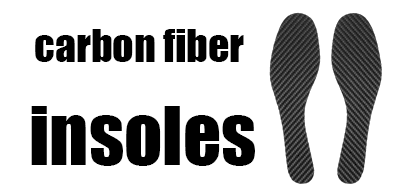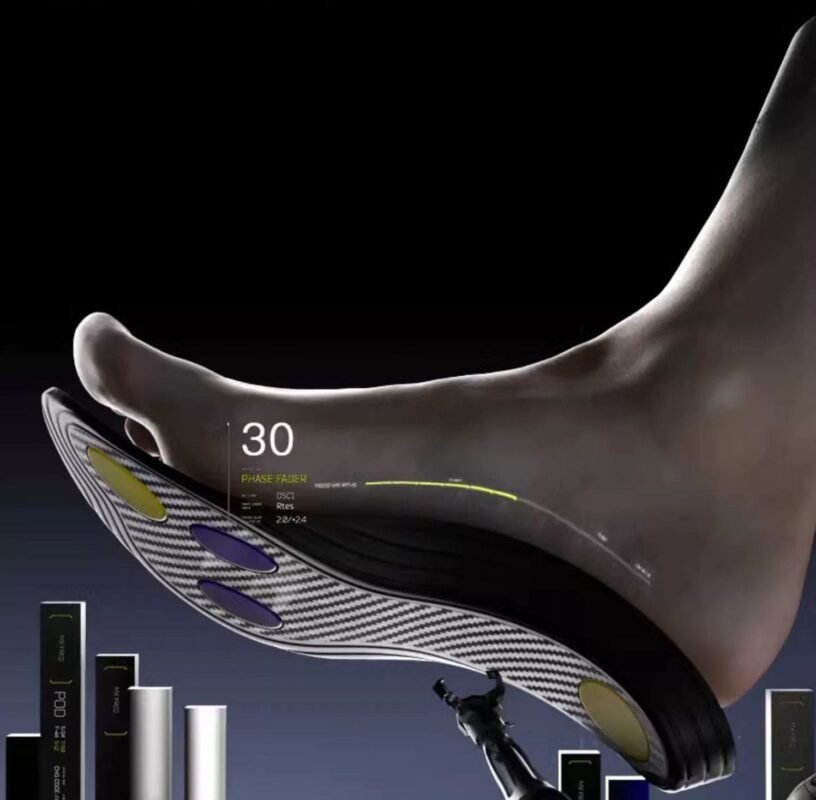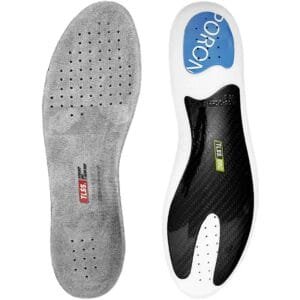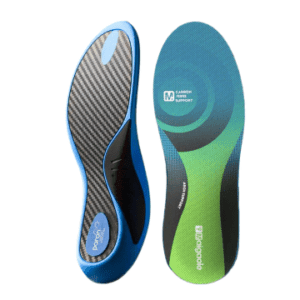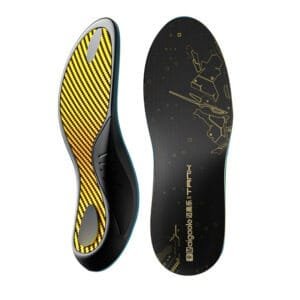Are you struggling with foot fatigue, plantar fasciitis, or ball of foot pain? You’re not alone—millions of people deal with foot discomfort daily, whether from long work shifts, intense workouts, or simply wearing unsupportive shoes. The good news? Carbon fiber insoles are emerging as a top solution in 2025, offering lightweight support, durability, and pain relief like never before.
In this guide, we’ll explore:
✔ Why carbon fiber insoles are trending in 2025
✔ How they help with plantar fasciitis and ball of foot pain
✔ Expert tips to reduce foot fatigue fast
✔ The best ways to use carbon fiber insoles for maximum comfort
Let’s dive in!
Why Carbon Fiber Insoles Are the #1 Choice in 2025
Foot pain is a common issue, especially among athletes, healthcare workers, and people who stand for long hours. Traditional insoles often lack the perfect balance of support and flexibility, leading to discomfort over time.
Carbon fiber insoles are gaining massive popularity because they:
✅ Are ultra-lightweight – No added bulk, making them ideal for athletic shoes and dress shoes alike.
✅ Provide superior arch support – Helps distribute pressure evenly, reducing strain on the ball of the foot and heel.
✅ Improve energy return – The semi-rigid structure enhances propulsion, making walking and running more efficient.
✅ Last longer than foam or gel insoles – Carbon fiber doesn’t compress over time, ensuring long-term support.
With more people prioritizing foot health and performance, carbon fiber insoles are becoming a must-have in 2025.
How Carbon Fiber Insoles Help with Plantar Fasciitis
Plantar fasciitis (heel pain caused by inflamed tissue) affects nearly 10% of adults, especially runners and those with flat feet. Standard insoles may temporarily cushion the foot, but they often fail to provide the structural reinforcement needed for healing.
Why Carbon Fiber Works Better for Plantar Fasciitis
🔹 Reduces strain on the plantar fascia – The rigid yet flexible design prevents overstretching of the ligament.
🔹 Promotes proper foot alignment – Misalignment worsens plantar fasciitis; carbon fiber insoles correct this.
🔹 Enhances shock absorption – Less impact on the heel means faster recovery.
A 2024 study in the Journal of Foot & Ankle Research found that semi-rigid insoles (like carbon fiber) significantly reduced plantar fasciitis pain compared to soft orthotics.
Pro Tip: If you have plantar fasciitis, look for carbon fiber insoles with a deep heel cup to stabilize your foot and reduce tension on the fascia.
-
$159.00Original price was: $159.00.$93.99Current price is: $93.99.
Relieving Ball of Foot Pain with Carbon Fiber Insoles
Ball of foot pain (metatarsalgia) is common in runners, dancers, and people who wear high heels. It occurs when excessive pressure is placed on the forefoot, leading to inflammation and discomfort.
How Carbon Fiber Insoles Help
✔ Redistributes pressure – Prevents excessive force on the metatarsal bones.
✔ Adds a protective layer – The firm yet flexible material cushions the forefoot without losing support.
✔ Improves foot mechanics – Encourages a more natural gait, reducing strain.
For best results, pair carbon fiber insoles with shoes that have a wide toe box to avoid compression.
Expert Tips to Stop Foot Fatigue Fast
Even the best insoles work better when combined with smart foot care habits. Here are 5 expert-recommended tips to reduce foot fatigue:
1. Choose the Right Shoe + Insole Combo
Running? Use carbon fiber insoles in stability shoes.
Standing all day? Opt for cushioned work shoes with rigid arch support.
High heels? Look for thin carbon fiber inserts to add support without bulk.
2. Stretch & Strengthen Your Feet
Roll a golf ball under your feet to relieve tension.
Calf stretches reduce strain on the plantar fascia.
Toe curls strengthen intrinsic foot muscles.
3. Alternate Footwear Daily
Wearing the same shoes every day can lead to repetitive stress. Rotate between 2-3 supportive pairs to vary pressure points.
4. Use Ice & Massage for Immediate Relief
Ice your feet for 10-15 minutes after long days.
Massage the arches to improve circulation.
5. Replace Worn-Out Insoles Regularly
Even carbon fiber insoles lose effectiveness after 6-12 months of heavy use. Check for signs of wear and replace them as needed.
Final Thoughts: Are Carbon Fiber Insoles Worth It?
If you suffer from foot fatigue, plantar fasciitis, or ball of foot pain, carbon fiber insoles are a game-changer in 2025. Their unique blend of lightweight support, durability, and biomechanical benefits makes them superior to traditional foam or gel inserts.
Ready to try carbon fiber insoles? Check out our best-selling carbon fiber insoles designed for all-day comfort and pain relief!
FAQ: Carbon Fiber Insoles
Q: Can carbon fiber insoles be trimmed to fit my shoes?
A: Yes! Most carbon fiber insoles are trim-to-fit, allowing customization for any shoe size.
Q: Are carbon fiber insoles good for flat feet?
A: Absolutely. They provide strong arch support, which helps correct overpronation in flat feet.
Q: How long do carbon fiber insoles last?
A: With proper care, they can last 6-12 months, far longer than foam insoles.
